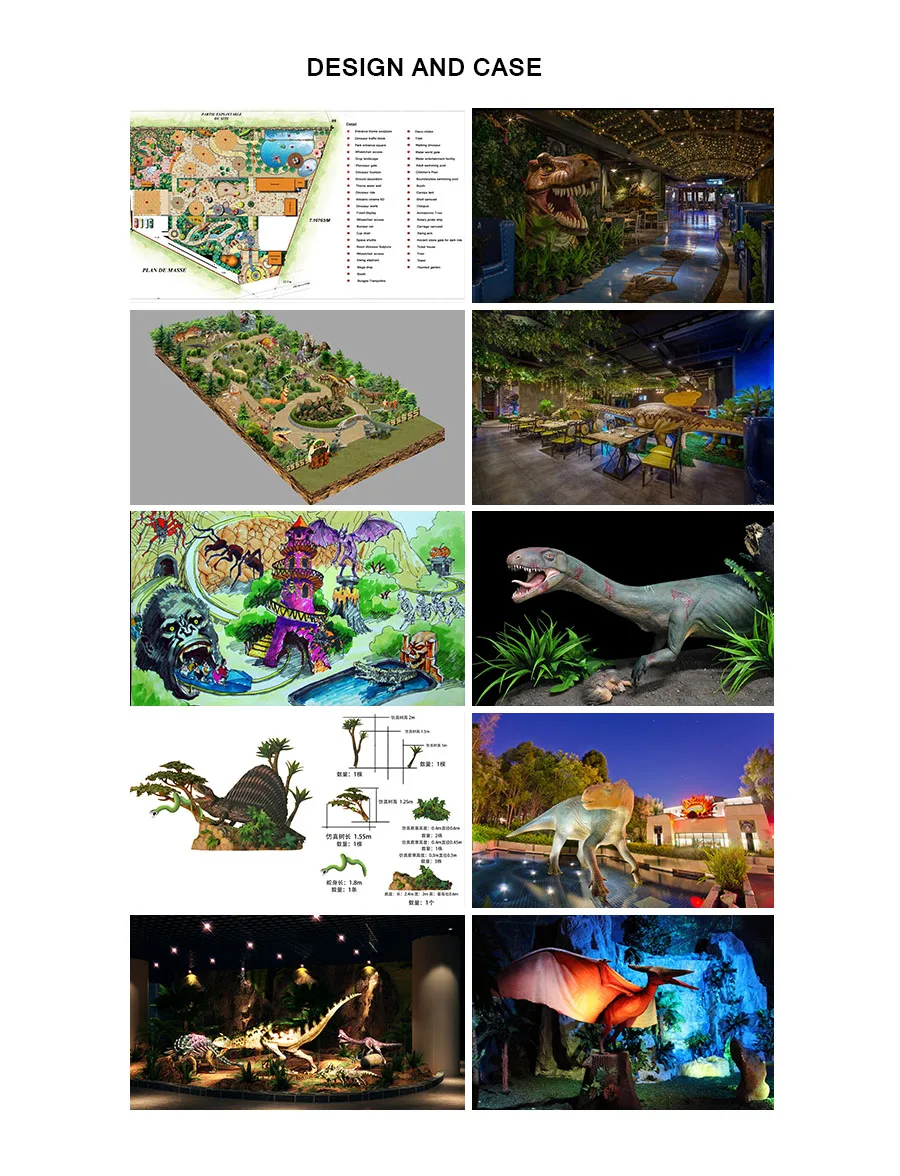Prehistoric animals realistic animatronic Mastodon life size
MORE INFORMATION
| Input | AC 110/220V ,50-60HZ |
| Plug | Euro plug / British Standard / SAA / C-UL / or depends on request |
| Control mode | Automatic / Infrared / remote / coin / Button / Voice / Touch / Temperature / shooting etc. |
| Waterproofing grade | IP66 |
| Working condition | Sunshine, rain, seaside, 0~50℃(32℉~82℉) |
| Optional function | Sound can be increased to 128 kinds Smoke,/ water. / bleed / smell / change color / change lights / LED screen etc interactive(Location tracking) / conversine(currently only Chinese) |
AFTER-SALE SERVICE
| Service | Need be cut for shipping,fwill provide a detailed installation manual. |
| Warranty | We provide 2 years warranty for all of our antrimatronic models, the warranty pieriod starts from freight arrives at destination port. Our warranty covers motor, reducer, control box, etc. |






 real animal animatronic ancient animal model for sale
outdoor playground life size animal custom life size animal simulation animals realistic sculpture life size outdoor playground animal statue artificial animal sculpture animatronic Mastodon animatronic model animatronic for sale real Mastodon robotic Mastodon electric animatronic animals robotic animal Mastodon theme park animatronic sculpture zoo park animatronic animal vivid garden animal zoo exhibition
prehistoric animal prehistoric theme park animal products
A mastodon is any proboscidean belonging to the extinct genus Mammut (family Mammutidae) that inhabited North and Central America during the late Miocene or late Pliocene up to their extinction at the end of the Pleistocene 10,000 to 11,000 years ago. Mastodons lived in herds and were predominantly forest-dwelling animals that lived on a mixed diet obtained by browsing and grazing, somewhat similar to their distant relatives, modern elephants, but probably with greater emphasis on browsing.
M. americanum, the American mastodon, and M. pacificus, the Pacific mastodon, are the youngest and best-known species of the genus. Mastodons disappeared from North America as part of a mass extinction of most of the Pleistocene megafauna, widely believed to have been caused by a combination of climate changes at the end of the Pleistocene combined with overexploitation by Clovis hunters
A Dutch tenant farmer found the first recorded remnant of Mammut, a tooth some 2.2 kg (5 lb) in weight, in the village of Claverack, New York, in 1705. The mystery animal became known as the "incognitum". In 1739 French soldiers at present-day Big Bone Lick State Park, Kentucky, found the first bones to be collected and studied scientifically. They carried them to the Mississippi River, from where they were transported to the National Museum of Natural History in Paris. Similar teeth were found in South Carolina, and some of the enslaved Africans there supposedly recognized them as being similar to the teeth of African elephants. There soon followed discoveries of complete bones and tusks in Ohio. People started referring to the "incognitum" as a "mammoth", like the ones that were being dug out in Siberia[3] – in 1796 the French anatomist Georges Cuvier proposed the radical idea that mammoths were not simply elephant bones that had been somehow transported north, but a species which no longer existed. Johann Friedrich Blumenbach assigned the scientific name Mammut to the American "incognitum" remains in 1799, under the assumption that they belonged to mammoths. Other anatomists noted that the teeth of mammoths and elephants differed from those of the "incognitum", which possessed rows of large conical cusps, indicating that they were dealing with a distinct species. In 1817 Cuvier named the "incognitum" Mastodon.
real animal animatronic ancient animal model for sale
outdoor playground life size animal custom life size animal simulation animals realistic sculpture life size outdoor playground animal statue artificial animal sculpture animatronic Mastodon animatronic model animatronic for sale real Mastodon robotic Mastodon electric animatronic animals robotic animal Mastodon theme park animatronic sculpture zoo park animatronic animal vivid garden animal zoo exhibition
prehistoric animal prehistoric theme park animal products
A mastodon is any proboscidean belonging to the extinct genus Mammut (family Mammutidae) that inhabited North and Central America during the late Miocene or late Pliocene up to their extinction at the end of the Pleistocene 10,000 to 11,000 years ago. Mastodons lived in herds and were predominantly forest-dwelling animals that lived on a mixed diet obtained by browsing and grazing, somewhat similar to their distant relatives, modern elephants, but probably with greater emphasis on browsing.
M. americanum, the American mastodon, and M. pacificus, the Pacific mastodon, are the youngest and best-known species of the genus. Mastodons disappeared from North America as part of a mass extinction of most of the Pleistocene megafauna, widely believed to have been caused by a combination of climate changes at the end of the Pleistocene combined with overexploitation by Clovis hunters
A Dutch tenant farmer found the first recorded remnant of Mammut, a tooth some 2.2 kg (5 lb) in weight, in the village of Claverack, New York, in 1705. The mystery animal became known as the "incognitum". In 1739 French soldiers at present-day Big Bone Lick State Park, Kentucky, found the first bones to be collected and studied scientifically. They carried them to the Mississippi River, from where they were transported to the National Museum of Natural History in Paris. Similar teeth were found in South Carolina, and some of the enslaved Africans there supposedly recognized them as being similar to the teeth of African elephants. There soon followed discoveries of complete bones and tusks in Ohio. People started referring to the "incognitum" as a "mammoth", like the ones that were being dug out in Siberia[3] – in 1796 the French anatomist Georges Cuvier proposed the radical idea that mammoths were not simply elephant bones that had been somehow transported north, but a species which no longer existed. Johann Friedrich Blumenbach assigned the scientific name Mammut to the American "incognitum" remains in 1799, under the assumption that they belonged to mammoths. Other anatomists noted that the teeth of mammoths and elephants differed from those of the "incognitum", which possessed rows of large conical cusps, indicating that they were dealing with a distinct species. In 1817 Cuvier named the "incognitum" Mastodon.

+86-813-2104677

info@sanherobot.com

+86-13990010824

No.13 Huixin Road, Yantan Town, Yantan District, Zigong City, Sichuan Province, China